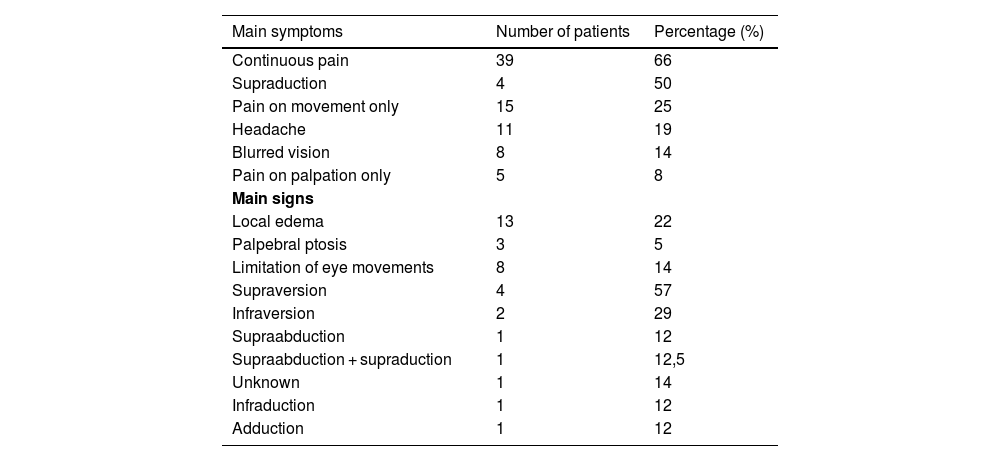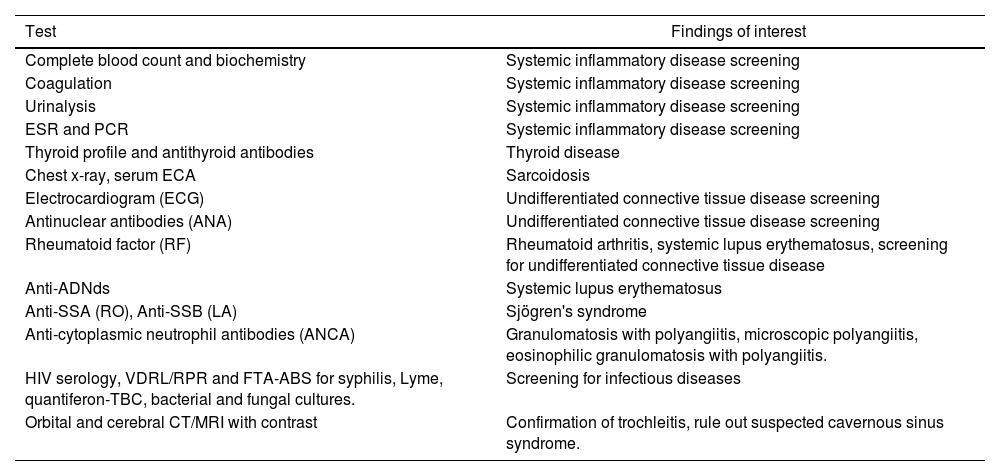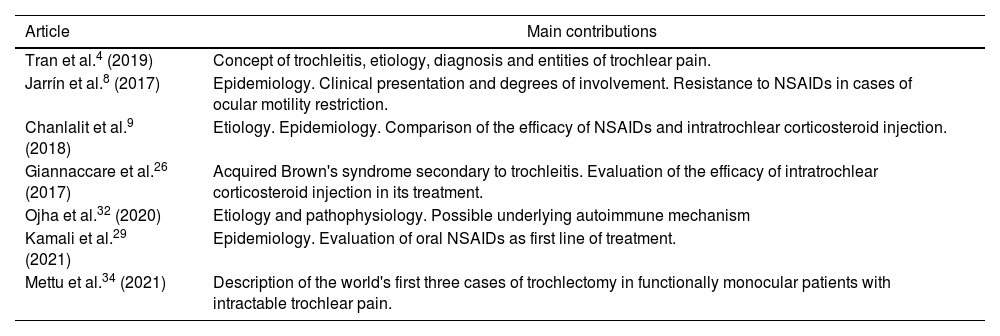Trochleitis is clinically and/or radiologically evidenced inflammation of the trochlea or orbital pulley.
Clinically it is characterized by pain and hypersensitivity in the superomedial orbital angle, which is increased or triggered by direct palpation of the area and/or eye movements. During the REM (rapid eye movements) phase of sleep, patients with trochleitis suffer from nocturnal micro-awakenings that impede their rest, and pain is often associated with visual symptoms (diplopia or Brown's syndrome).
The lack of common guidelines for diagnosis and treatment of this disease, its low prevalence and the lack of knowledge of the different entities associated with trochlear pain, leads to underdiagnosis or misdiagnosis. It is essential to know the characteristics of this pathology and to diagnose it correctly, differentiating it from other trochlear pain entities, in order to be able to carry out an adequate therapeutic and prognostic approach. The lack of consensus on the therapeutic protocol means that various treatments are used, in different order and often with a combination of several without a firm scientific basis.
This comprehensive review of previous studies concludes that nonsteroidal anti-inflammatory drugs (NSAIDs) achieve an overall complete cure rate of 77%, although this rate decreases to 30% in case of motility restriction or diplopia. Intratrochlear corticosteroid injection achieves an overall complete cure rate of 86%, even in the worst prognosis trochleitis, being the only effective option in NSAID-refractory trochleitis and currently being questioned as the first treatment option.
La trocleítis es la inflamación de la tróclea o polea orbitaria evidenciada clínica y/o radiológicamente.
Clínicamente se caracteriza por dolor e hipersensibilidad en el ángulo superomedial orbitario, el cual se ve aumentado o desencadenado por la palpación directa de la zona y/o por los movimientos oculares. Durante la fase REM (rapid eye movements) del sueño, los pacientes con trocleítis sufren microdespertares nocturnos que impiden su descanso y con frecuencia el dolor se asocia a síntomas visuales (diplopía o Síndrome de Brown).
La inexistencia de guías comunes de diagnóstico y tratamiento de esta enfermedad, su baja prevalencia y el desconocimiento de las distintas entidades asociadas al dolor troclear, lleva al infradiagnóstico o al error diagnóstico. Resulta fundamental conocer las características de esta patología y diagnosticarla correctamente, diferenciándola de otras entidades del dolor troclear, para poder realizar un adecuado abordaje terapéutico y pronóstico. La ausencia de consenso sobre el protocolo terapéutico hace que se empleen diversos tratamientos, en distinto orden y a menudo con una combinación de varios sin base científica firme.
Esta revisión exhaustiva de estudios previos, concluye que los antiinflamatorios no esteroideos (AINES) consiguen una tasa general de curación completa del 77%, si bien esta tasa disminuye al 30% en caso de restricción de la motilidad o diplopía. La inyección intratroclear de corticoides logra una tasa general de curación completa del 86%, incluso en las trocleítis de peor pronóstico, siendo la única opción efectiva en las trocleítis refractarias a AINES y cuestionándose actualmente como primera opción de tratamiento.


















